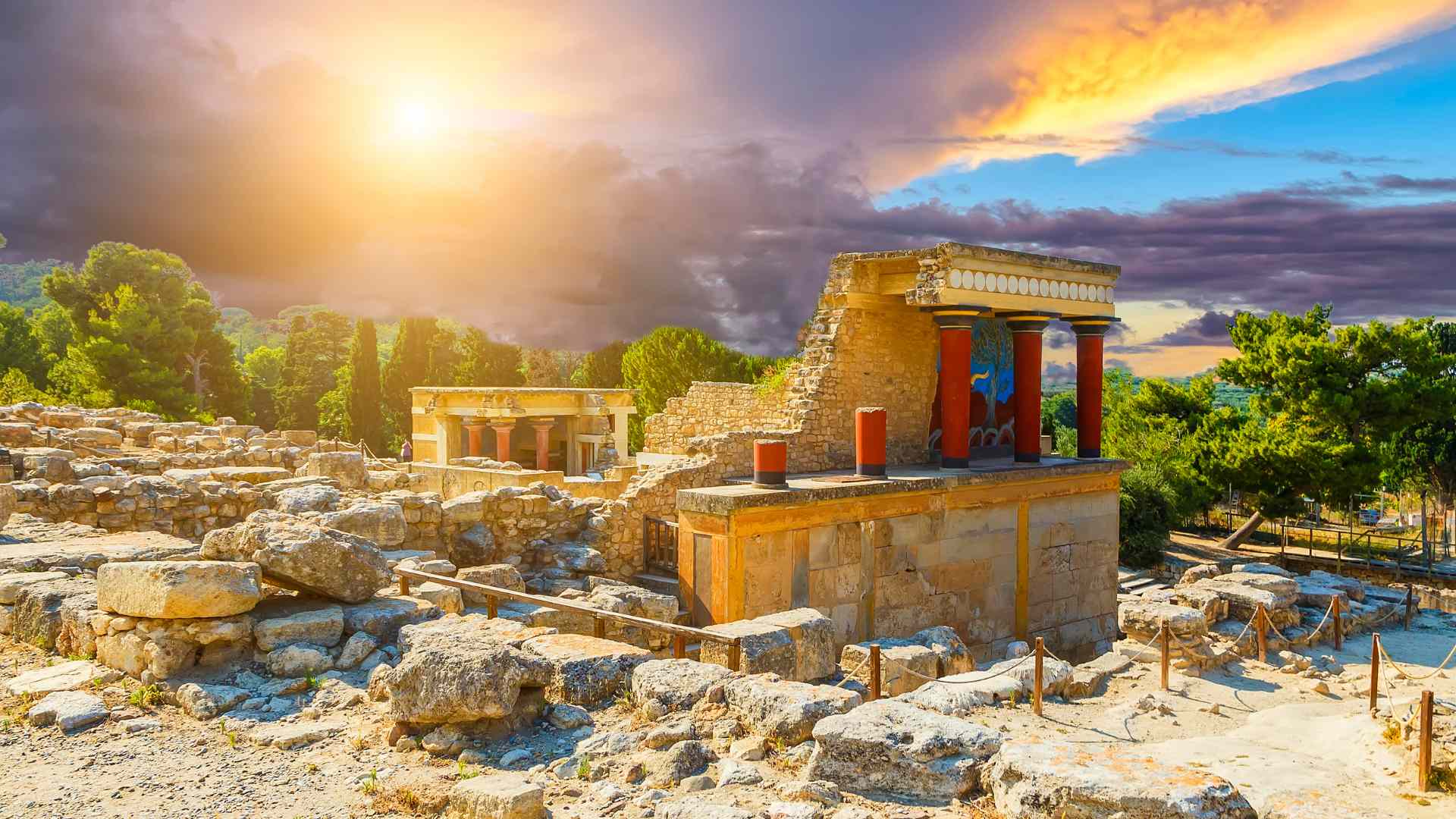Easter in Crete is a time of celebration, reflection, and, of course, food! The island's…

Famous Archaeological Sites of Crete
Crete is home to some of the most important archaeological sites in Greece, with a history that spans thousands of years, from the ancient Minoan civilization to Roman and Venetian times. Here are the must-see archaeological sites across the island, including those in Rethymno:
Palace of Knossos (Heraklion)
The Palace of Knossos is the most famous archaeological site on Crete and a must-visit for anyone interested in ancient history. Located just outside Heraklion, it was the center of the Minoan civilization, dating back to 1450 BCE. Visitors can explore the palace’s elaborate rooms, courtyards, and colorful frescoes, and learn about the myth of the Minotaur in the labyrinth.
Palace of Phaistos (Heraklion)
Located in the Messara Plain, the Palace of Phaistos is another important Minoan site. The palace, which dates back to the 16th century BCE, offers a quieter and less crowded alternative to Knossos. It is famous for the Phaistos Disc, a mysterious artifact that remains undeciphered. The site also offers spectacular views of the surrounding hills and valleys.
Gortyna (Heraklion)
Gortyna, located in the Messara Valley, was the capital of Roman Crete. This ancient city boasts the Gortyn Code, an inscription that is one of the earliest legal texts in Greek history. Visitors can explore Roman ruins, including a theater, bathhouse, and the remains of various temples.
Ancient Aptera (Chania)
The archaeological site of Aptera, near Souda Bay, dates back to Minoan, Hellenistic, and Roman times. Known for its well-preserved ruins, including city walls, a theater, and an ancient Roman cistern, Aptera provides a unique glimpse into Crete’s past. The site offers spectacular views of the surrounding countryside and the sea.
Rethymno Old Town and Venetian Fortress (Rethymno)
While not an ancient archaeological site in the strictest sense, the Old Town of Rethymno is a beautiful example of Venetian and Ottoman architecture. The city’s Venetian Fortress, known as the Fortezza, is an impressive 16th-century structure that offers panoramic views of the town and the sea. Inside, you can explore remnants of the fortress’s walls, cannons, and several historical buildings.
Eleutherna (Rethymno)
The ancient city of Eleutherna, located between Rethymno and Heraklion, was an important city-state during the Geometric, Archaic, and Hellenistic periods. The site includes a well-preserved necropolis, ancient temples, and a sanctuary to the goddess Artemis. Eleutherna’s recent excavations have uncovered a wealth of artifacts, offering a deep dive into Crete’s ancient past.
Spinalonga Island (Agios Nikolaos)
Spinalonga, located off the northeastern coast of Crete, is famous for its Venetian fortress and later use as a leper colony. While it’s not a traditional ancient site, the history of the island is fascinating, with its Venetian and Ottoman-era structures and stunning sea views. It’s a must-visit for history enthusiasts.
The Archaeological Museum of Rethymno (Rethymno)
For those visiting Rethymno, the Archaeological Museum of Rethymno is an essential stop. The museum showcases artifacts from the Minoan, Hellenistic, Roman, and Byzantine periods, with items found from Eleutherna, Aptera, and other surrounding areas. The museum provides a comprehensive look at Rethymno’s rich history.
Conclusion
Crete is an island filled with rich history and ancient wonders, and the archaeological sites across its regions, including Rethymno, offer a deep dive into the civilizations that shaped the Mediterranean. Whether you’re exploring Minoan palaces, Roman ruins, or Venetian fortresses, Crete’s archaeological treasures are sure to leave a lasting impression.



